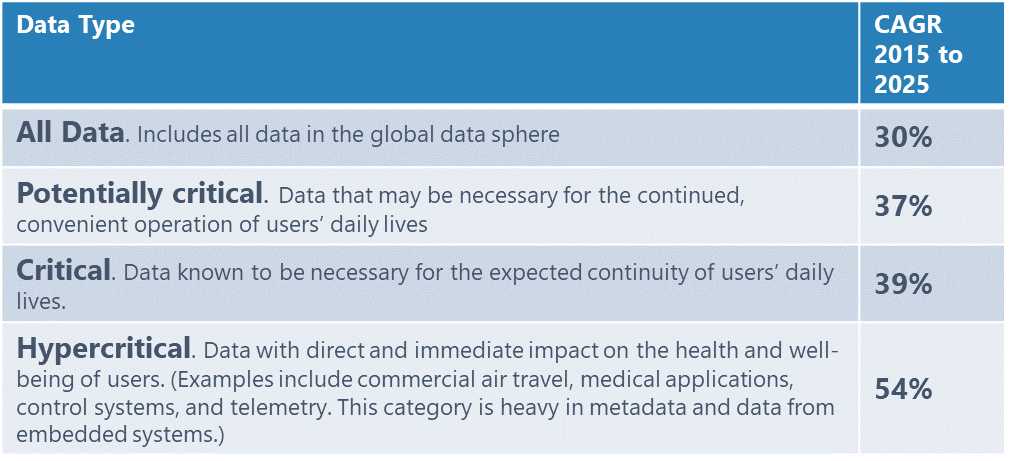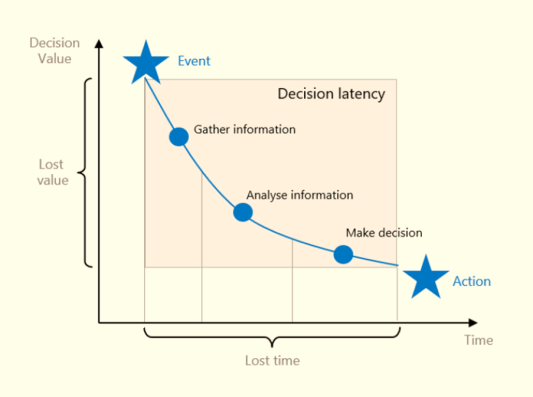The flexibility and agility of cloud computing provide are great for a wide range of business and IT scenarios. It provides an almost limitless storage capacity. And cloud's computation capability creates enormous economies of scale, management simplicity and use-based cost. However, it still has its limitations.
As digitalisation spreads throughout businesses, expectations are growing. People expect that it will be possible to interact with the digital world in real time. A second in this world might as well be an eternity. Relying on data centres located some distance away becomes impossible. Network constraints and latency will have serious business effects. It simply is not an option to propose the right promotion to customers as they arrive at the shop. And it is difficult to trigger an immediate response to a security threat or event without being able to react in real time.
However, if you move computation from cloud to the edge, the average response time is reduced from 900 to 169 ms. It is clear that this could have a huge effect on decision time, operations optimization, unplanned downtime and cost savings.
Decision value depends on decision time
 Edge computing is defined as computation power, applications, data and services located at the edge of a network rather than in a centralized data centre. Edge analytics, usually powered by artificial intelligence (AI), is not just about gaining operational efficiencies or making the business more responsive. Some organisations require complex or sophisticated analytics, such as person and/or object recognition, combined with fast automated decisions. Others may only need decision speed on autonomous systems (robotics). For both, however, a delay in delivering results or loss of data from a connectivity failure can cause reputational or financial damage or worse.
Edge computing is defined as computation power, applications, data and services located at the edge of a network rather than in a centralized data centre. Edge analytics, usually powered by artificial intelligence (AI), is not just about gaining operational efficiencies or making the business more responsive. Some organisations require complex or sophisticated analytics, such as person and/or object recognition, combined with fast automated decisions. Others may only need decision speed on autonomous systems (robotics). For both, however, a delay in delivering results or loss of data from a connectivity failure can cause reputational or financial damage or worse.
 When we think about decision value, latency matters a lot. However, several other aspects also affect decision value. These include the communication between devices and the cloud, especially for "heavy" data, such as (ultra) high-definition multimedia.
When we think about decision value, latency matters a lot. However, several other aspects also affect decision value. These include the communication between devices and the cloud, especially for "heavy" data, such as (ultra) high-definition multimedia.
The desire to add AI algorithms, and particularly machine learning, to edge devices comes from the need to keep data private on those devices or to reduce the cost of sending it to the cloud. However, most of the demand comes from customers. They want edge computing devices in their facilities, or in the hands of their customers. They want to interact directly in real time.
Edge computing is eating cloud AI/analytics
Commentators generally agree that edge computing is growing. Tom Bittman of Gartner has gone on record suggesting that digital business, and particularly the expansion of the Internet of Things, is likely to push more processing to the edge. One study suggests that edge computing is expected to grow at a CAGR of 35% annually. Analysts expect the edge industry to reach a value of nearly $34 billion by 2023.
A Markets & Markets research report predicts that the edge AI software market will grow from $356 million in 2018 to $1.152 billion in 2023, a CAGR of 26.5%. A study from ABI Research suggests that shipments of devices with edge AI capabilities will grow 15 times by 2023, to 1.2 billion units. It estimated that the share of AI tasks taking place on edge devices rather than in the cloud will grow more than seven times, from 6% in 2017 to 43% in 2023. Gartner estimates that by 2022, more than 50% of enterprise-generated data will be created and processed outside data centres or the cloud.
Where digital meets physical
Edge computing makes it possible to have analytics and AI where the digital world meets the physical. It allows businesses to handle thousands of data points and interactions rapidly and immediately, in real time. Edge computing also means that vast amounts of data do not have to be stored. So it is analytics and AI on the edge that really enable businesses to take advantage of the internet of everything, everywhere.
Edge computing allows businesses to handle thousands of data points and interactions rapidly and immediately, in real time. Click To TweetThis has not gone unnoticed. For example, Markus Levy, head of AI technologies at NXP Semiconductors, has commented that having AI at the edge is what is really enabling customers to get value from the IoT. His firm has seen a huge amount of growth in both consumer IoT and industrial IoT because of this. We expect to see a whole lot more. Companies everywhere are coming to grips with how edge computing can help them to generate value.
